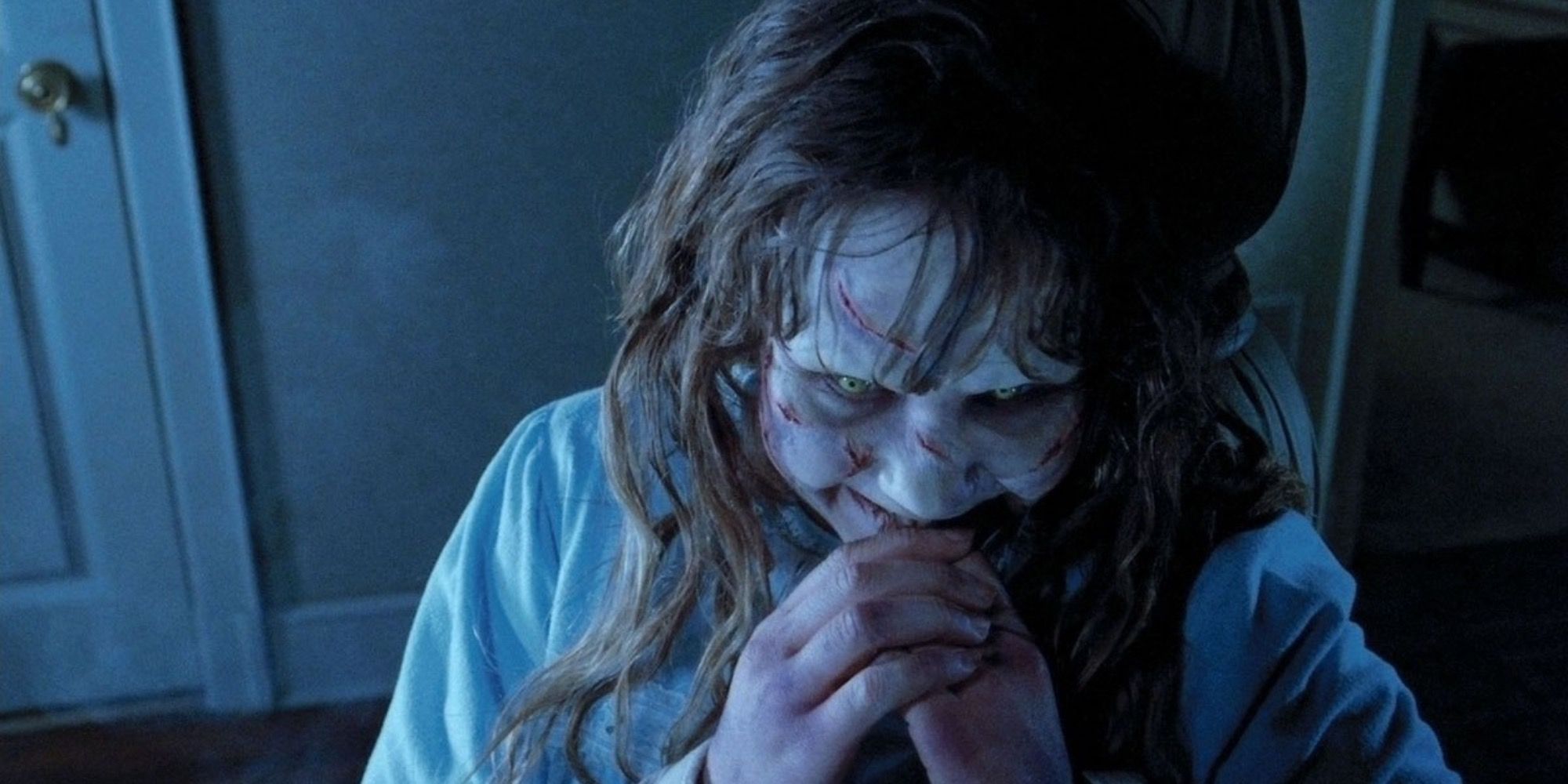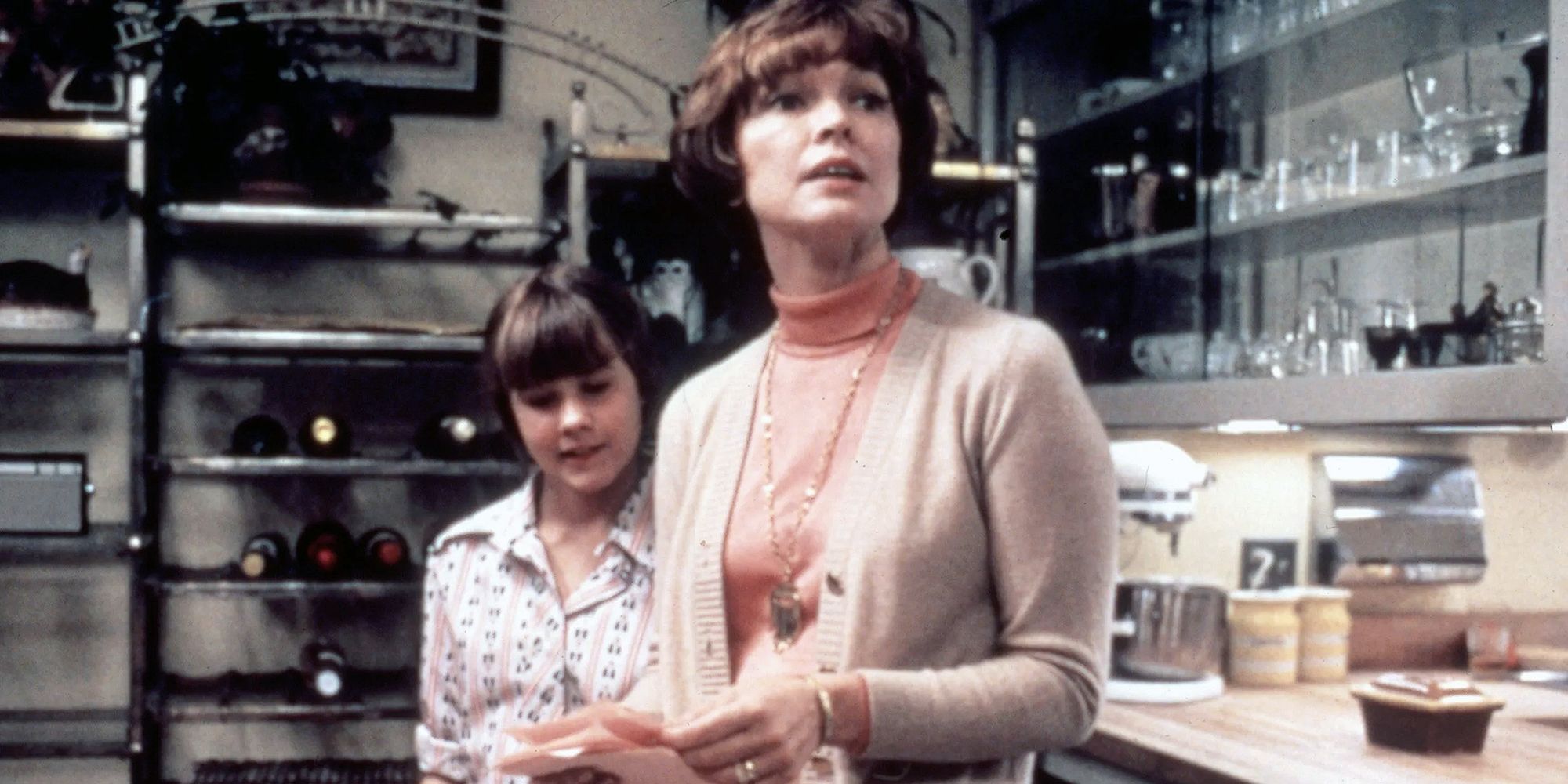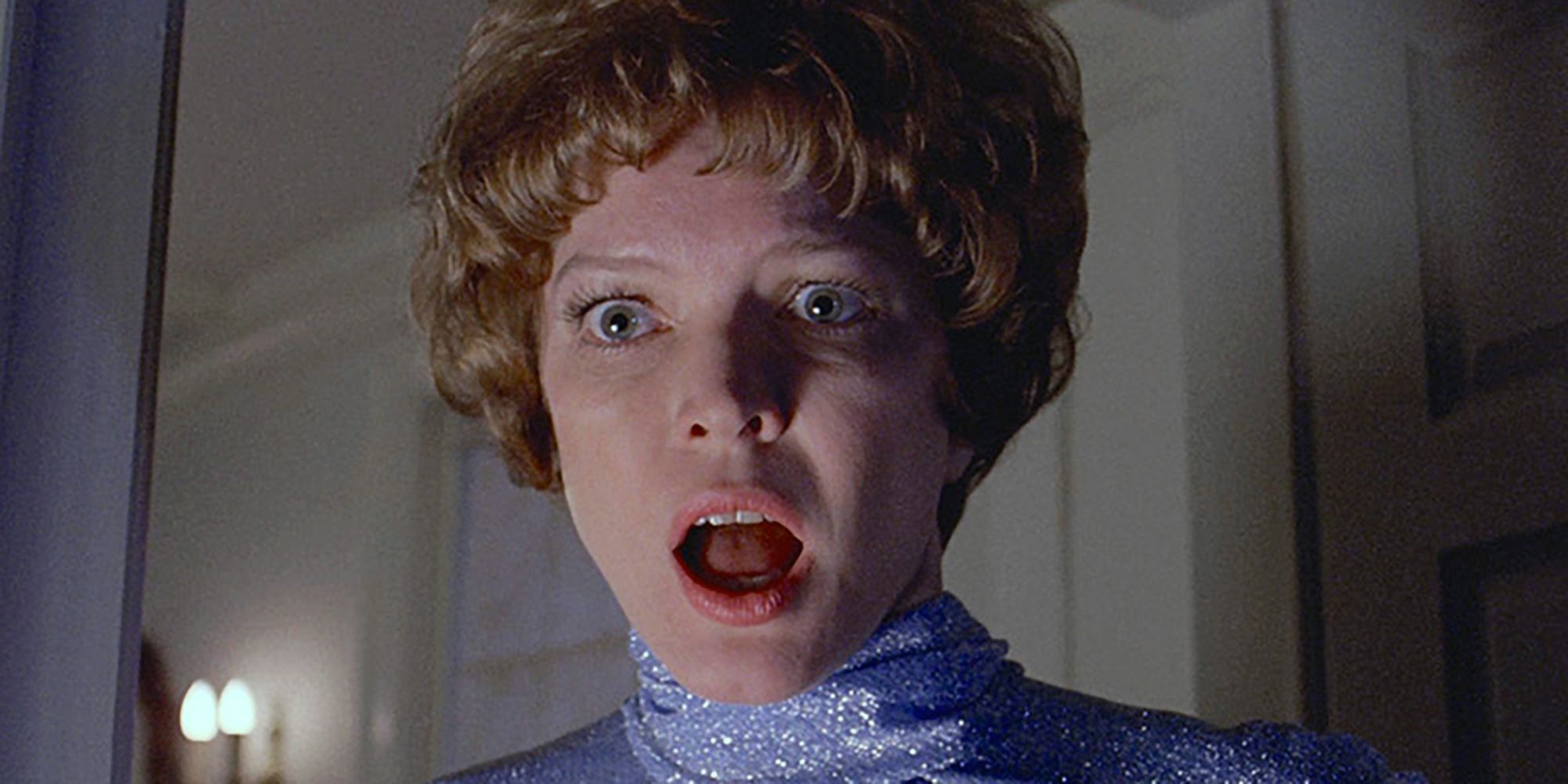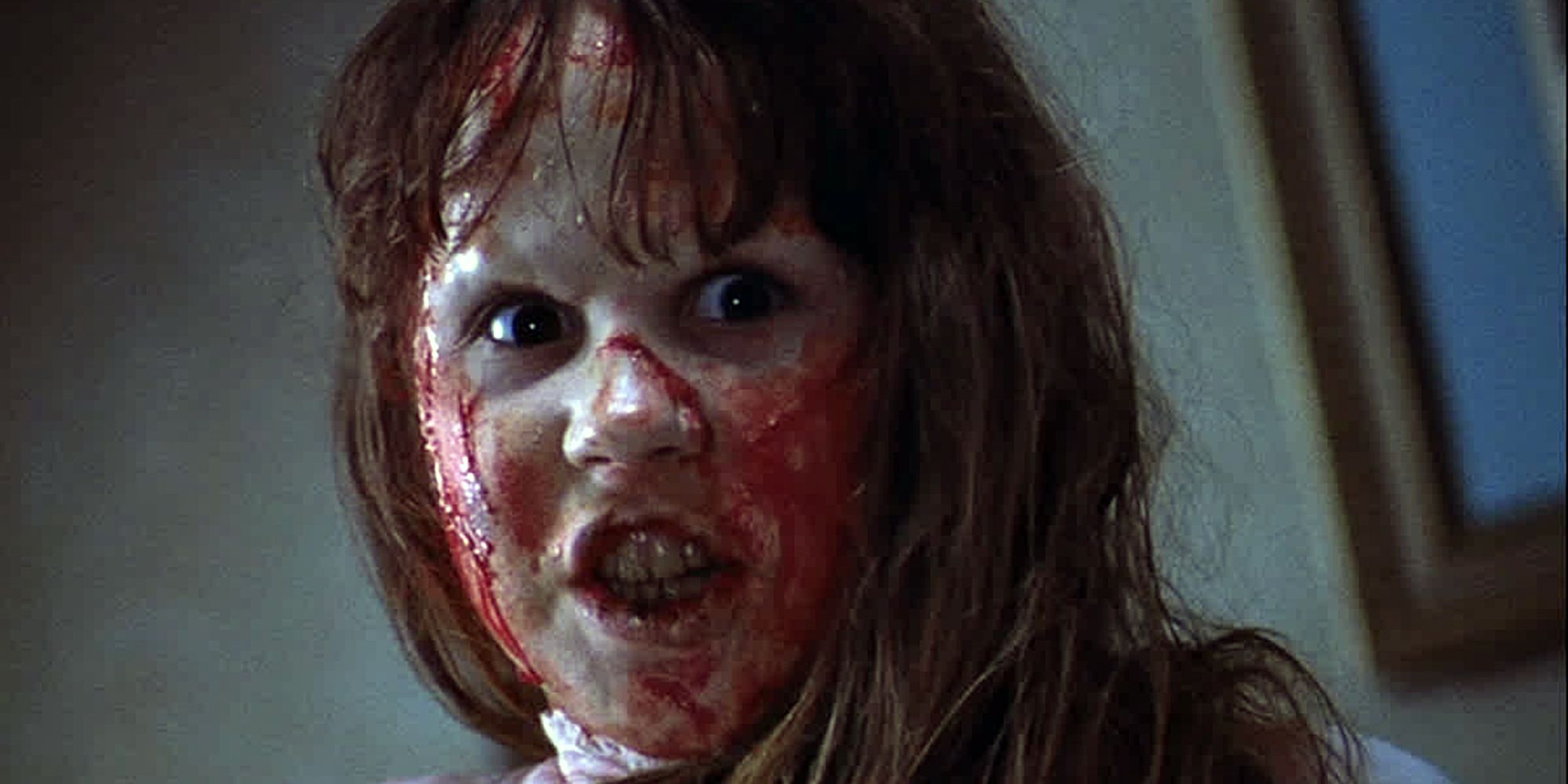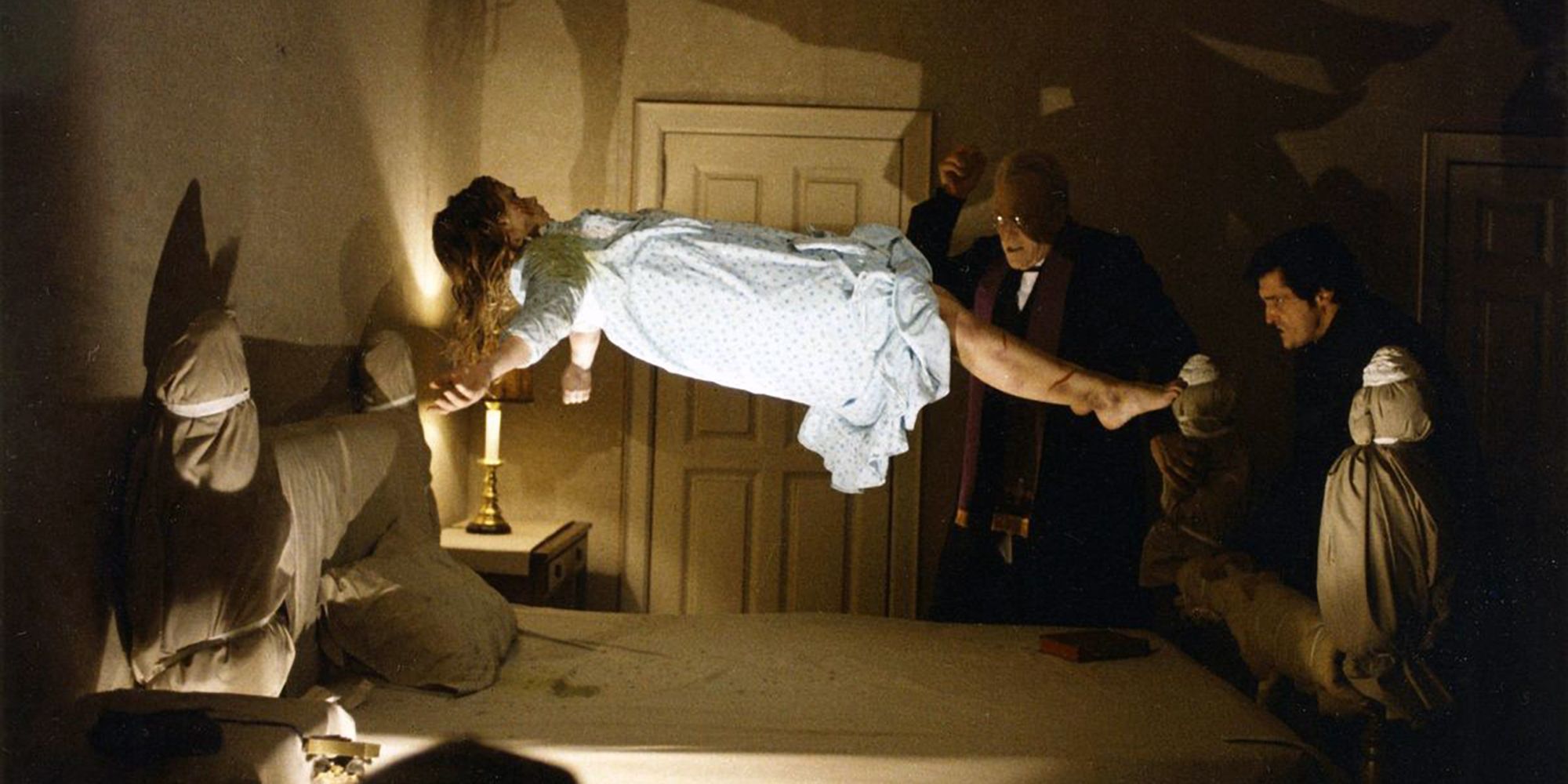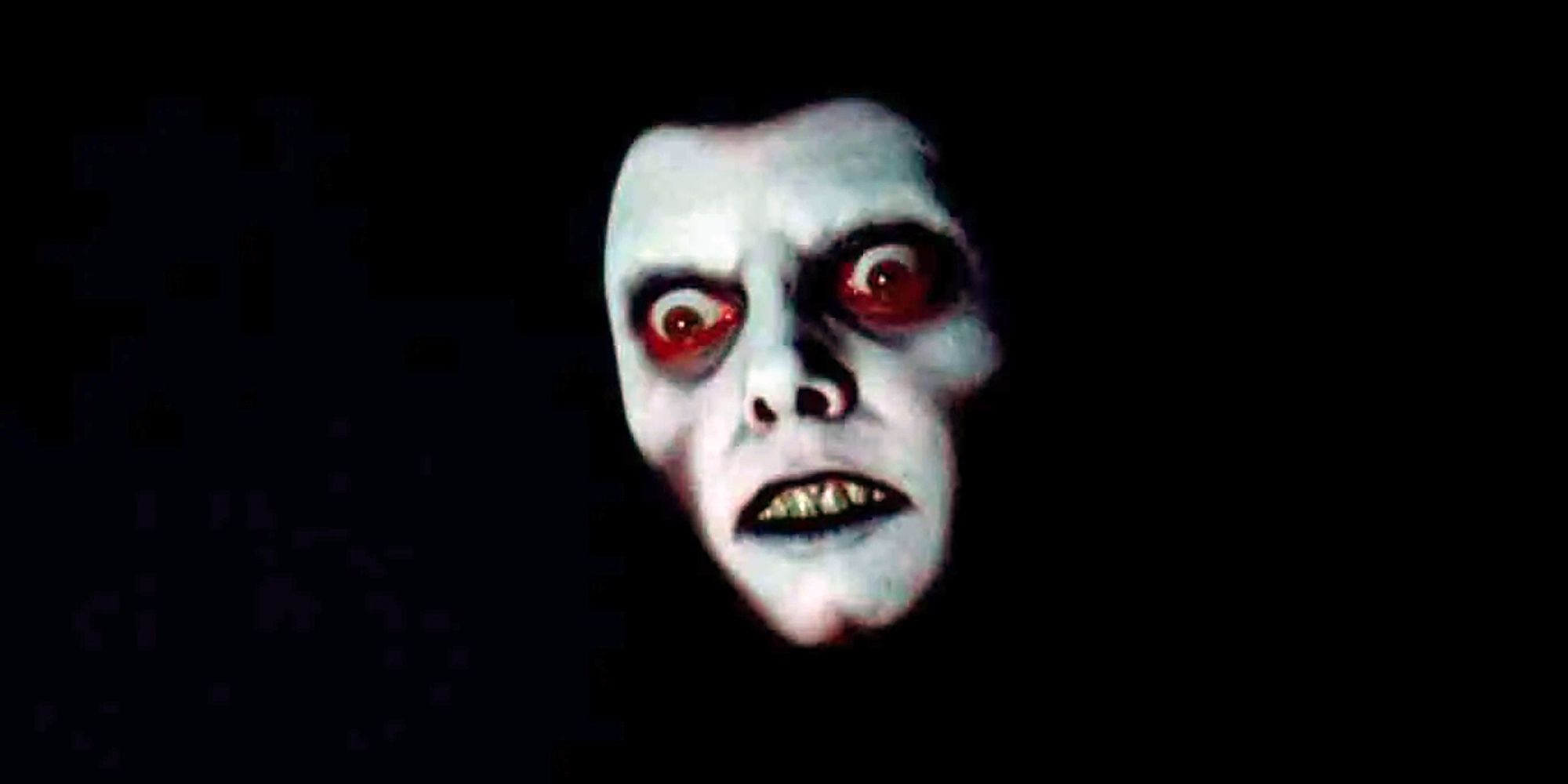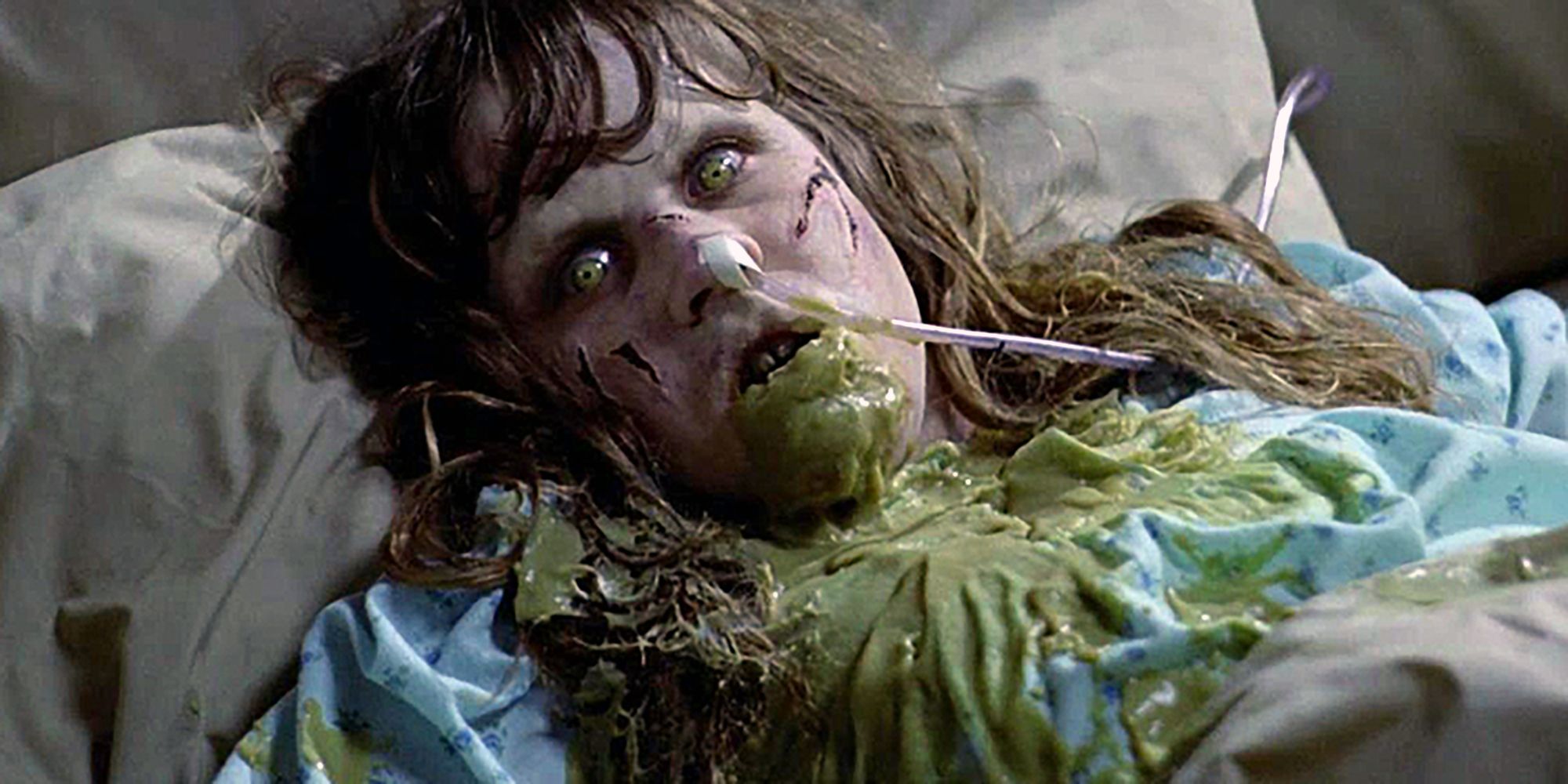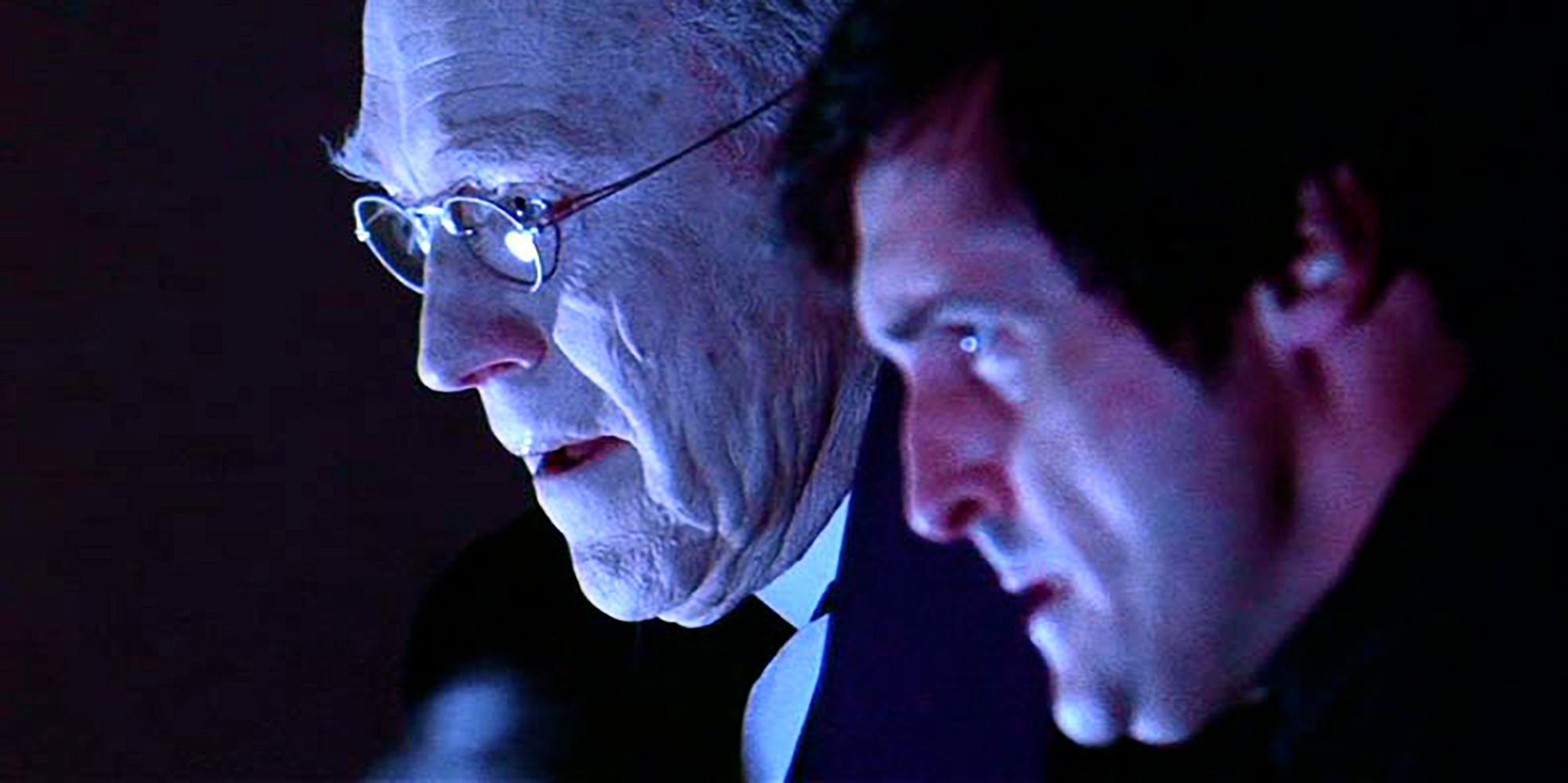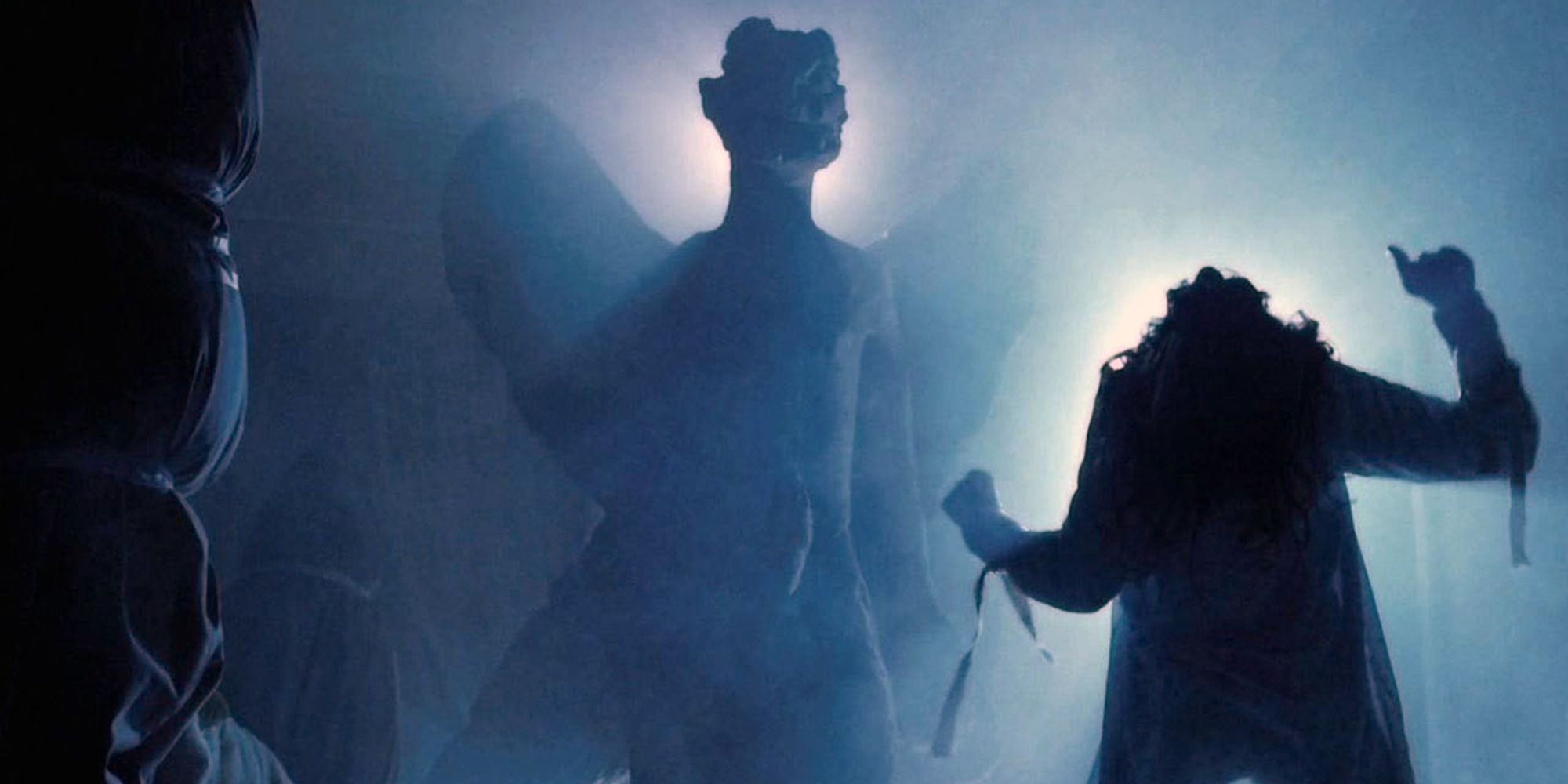Not many people know that William Peter Blatty, the author of the novel The Exorcist (1971), started out writing comedy. Among his most notorious works is the script for Blake Edwards' 1964 Pink Panther film A Shot In the Dark, starring comic genius Peter Sellers. Given his start writing for laughs, it is somewhat surprising that his seminal horror novel — based on a true story about the exorcism of a demonically possessed 13-year-old boy — would continue to shock and scare people decades later. The movie version of Blatty's book, released in 1973 and directed by William Friedkin, had the same effect and changed horror movie-making forever.
Audience reactions to The Exorcist upon its release — including running from the theater and fainting — are well-documented. Despite this, it was a hit. Nominated for 10 Academy Awards in 1974, it received Oscars for Best Screenplay and Best Sound. Now, at 50, The Exorcist continues to terrify audiences. Indeed, out of a list of 101 movies, in 2013, IMDb rated it the number one scariest movie ever; in 2020, Rotten Tomatoes put it in the top spot, too. There are numerous reasons for its profound impact and staying power on pop culture. From its striking imagery to the now-iconic performances of its cast, several factors contribute to The Exorcist's reputation as the all-time scariest movie.
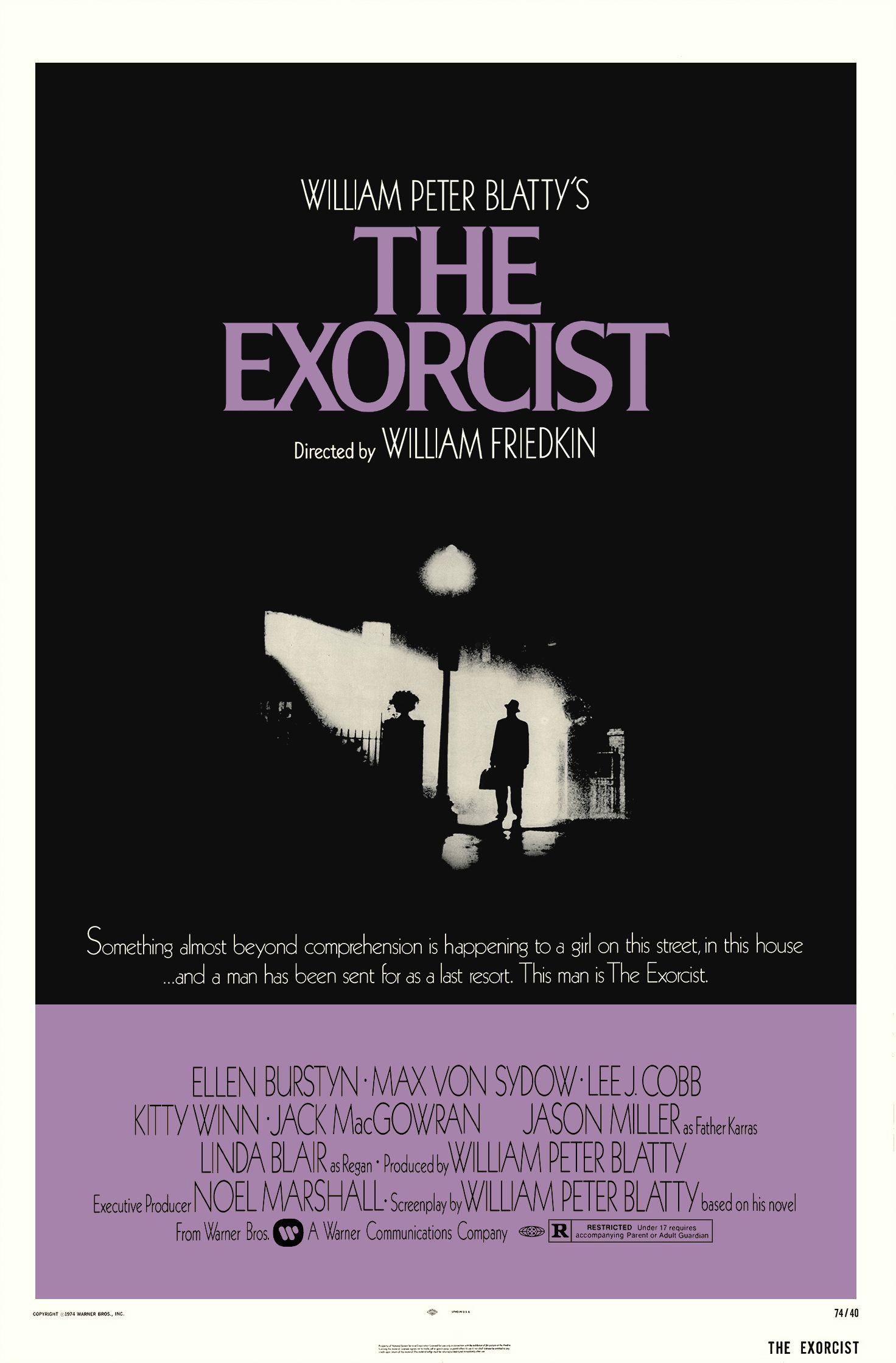
The Exorcist
When a young girl is possessed by a mysterious entity, her mother seeks the help of two Catholic priests to save her life.
- Release Date
- December 26, 1973
- Director
- William Friedkin
- Cast
- Ellen Burstyn , Max Von Sydow , Linda Blair , Lee J. Cobb
- Runtime
- 122 minutes
8 The Plot
A Simple Premise That Changed the Horror Genre Forever
Friedkin contrasts the mundanity of everyday American life with the life-altering demonic possession of a young girl while her mother and two priests try to save her: this only serves to increase The Exorcist's ability to terrify. Because neither Blatty nor Friedkin had tackled the horror genre before making The Exorcist — Friedkin had previously made documentaries — they opted for a realistic approach. The result was a movie that was fresh and new and did not rely on predictable horror movie tropes.
The Exorcist is more than a horror movie, it's a morality tale. Presented as the ultimate battle between good and evil, it asks its audience: are you right with God? The director's use of realism, underpinned by the premise that what happens to the 12-year-old Regan could happen to anyone, is what makes the movie truly unsettling. For example, the question about whether the Ouija board Regan uses was the cause of her possession is never answered. Friedkin's moralistic approach is a genius move and one that personally connects the viewer to the movie: no one is safe from demonic forces. But what is even more powerful is that, for the viewer, the inescapable evil depicted in The Exorcist has the potential to stay with them long after the movie ends.
7 The Cast
An Ensemble of Largely Unknown Actors
When a big-name star is cast in a movie, oftentimes, viewers are unable to see past the celebrity to the character they're playing. Wisely, when casting The Exorcist, Friedkin populated his movie with solid, believable actors instead of household names. A lot of huge names from that era were considered. For example, Audrey Hepburn was considered to play Chris McNeil, Stacy Keach was initially signed on to play Father Karras, and Marlon Brando could have been in the role of Father Merrin. If the film had gone down the route, it would have been a completely different picture.
Instead, the cast that was selected provided a grounded atmosphere to the film, featuring the talents of Ellen Burstyn, Jason Miller, and Max von Sydow in those roles, respectively. As for Linda Blair, whose role as Regan McNeil ties the whole movie together, she was a total unknown at the time and was hired based on an interview she had with Friedkin. Impressed by Blair's understanding of the book's subject matter and her nonchalance when discussing some of the more graphic portions of it, Friedkin gave her the part. Friedkin made an excellent choice in picking Blair, as she was able to go toe-to-toe with her adult costars.
6 The Imagery
Graphic and Striking, Like Nothing Seen Before (Or Since)
It is surprising that, given the graphic imagery featured in The Exorcist, the movie did not receive an X rating. Infamous scenes include Regan urinating on the carpet in front of dinner guests, stabbing at her genitals with a crucifix, desecrating a statue of the Virgin Mary, and, of course, the head-spinning scene. There is also the possessed Regan's use of obscene and graphic language.
Upon its release, the film's graphic scenes caused a stir amongst moviegoers, critics, and the Catholic Church, who tried to have the movie banned. Regardless, these graphic images add to the tension Friedkin was trying to create and work to dispel any disbelief viewers might have about the notion of evil. The Exorcist's on-screen depravity goes far beyond anything viewers consider morally acceptable, and this is what stays with them. As film critic Roger Ebert said in his 1973 review of the film: "During the movie, there are no reservations, but only experiences. We feel shock, horror, nausea, fear, and some small measure of dogged hope." This imagery remains strong, and few movies have come to top it: it's what makes The Exorcist one of the most disturbing horror movies ever.
5 The Special Effects
Convincing and Old-School
"The film is a triumph of special effects," Roger Ebert said in his 1973 critique of The Exorcist. Made before the existence of CGI, Friedkin and his team were required to get their hands dirty – literally – to bring to life Regan's transformation from an innocent young girl to a vessel for the demon Pazuzu.
The film broke a lot for practical effects in horror movies. He enlisted the talents of Dick Smith, one of Hollywood's best makeup artists, and special effects maestro Marcel Vercoutere. He also enlisted the help of Ron Nagle, Doc Siegel, Gonzalo Gavira, and Bob Fine to create the sound effects heard in the film. From the makeup that made the middle-aged von Sydow appear nearly 80 and make a little girl look like a demon to the practical effect trickery like making Reagan levitate, her head swivel, and projectile vomit, their groundbreaking practical effects make The Exorcist pass the test of time.
4 Now-Iconic Shots
Frightening, Brief, and Subliminal
While editing The Exorcist, Friedkin was going through some makeup test shots of Linda Blair's (uncredited) double, Eileen Dietz. Although the makeup was never used because Friedkin thought it looked too theatrical, he had another idea of what he might do with the images: insert them into the film as subliminal cuts. Lasting only one or two frames — about an eighth of a second — Friedkin's use of the images might've started as an experiment, but they worked perfectly to ramp up the fear factor.
The subliminal, blink-and-you'll-miss-it nature of the images meant that audiences were unsure whether they saw the white-faced demon briefly flash on the screen at the film's 45-minute mark (during Father Karras' dream sequence) or elsewhere in the movie. In addition to the other, more obvious scare-inducing techniques he used, with his clever placement of these charged and anxiety-inducing images Friedkin was able to further unnerve moviegoers on a subconscious level.
3 The Set Pieces
Expertly Used Non-Gratuitously
Even if you've only seen The Exorcist once, certain key elements (or perhaps all of them) will be indelibly etched into your brain: the pea soup projectile vomit, the crucifix scene, Regan levitating, the spinning head scene, etc. Yet these elements are not gratuitously used by Friedkin. Rather than being shocking for the sake of it, each set piece in The Exorcist is necessary to the story's progression.
Consider the horrific crucifix scene, for example. Here, audiences see Chris MacNeil pushed to the limit by her daughter's shocking behavior; it is the tipping point at which she decides to abandon medicine and psychiatry and seek the assistance of priests to help Regan. The movie's pacing is key. The Exorcist's shocks, story beats, climax, and resolution are all perfectly plotted out. Friedkin's use of set pieces feels organic and not contrived, and this contributes to the movie's longevity.
2 The Eerie Tone
A Distinct, Deliberate Lack of Humor
Having a good laugh during a horror movie can dispel an audience's excess nervous energy, particularly after a nasty jump scare. Think of the Evil Dead films or the Scream franchise, both of which are perfect examples of horror's effective use of humor to distract viewers, even if momentarily, from the on-screen horror.
Not so with The Exorcist, which provides no respite for the terrified viewer. Instead, Friedkin deliberately avoided the use of humor that might have afforded viewers time to take a break from his relentless audiovisual thrashing. As a result, The Exorcist is a supernatural terror ride that sustains its ominous atmosphere from start to finish. But, let's face it, no one watches a movie like The Exorcist for the laughs.
1 The Real-Life Impact
Tragedies Befell the Cast
Although unrelated to Friedkin's movie-making prowess, since the movie's release, much has been made of The Exorcist curse. Injuries, deaths, and freak events that occurred during and after filming add to the lore surrounding the movie and increase its fright factor.
A lot of cast members were affected by "the curse." Ellen Burstyn suffered a spinal injury when she was yanked back by a harness during filming, leaving her on crutches for the rest of production. Max von Sydow's brother died on the actor's first day of shooting. Jason Miller's son, Jordan, was almost killed after he was struck by a motorcycle. Jack MacGowran, who played the alcoholic filmmaker Burke Dennings, died of influenza before the film was released. The interior set of the MacNeil home burned down during filming. And then there was Paul Bateson, who appeared in The Exorcist's cerebral angiography scene as a radiology technician (it was his day job). In 1979, Bateson was convicted of murdering film industry journalist Addison Verrill.
Were these mere coincidences or the work of a malevolent demonic force that was unleashed by the making of the movie? Either way, the so-called The Exorcist curse reinforces the movie's position as the number one scariest movie ever made.
The Exorcist is available to rent on Amazon Prime Video.

